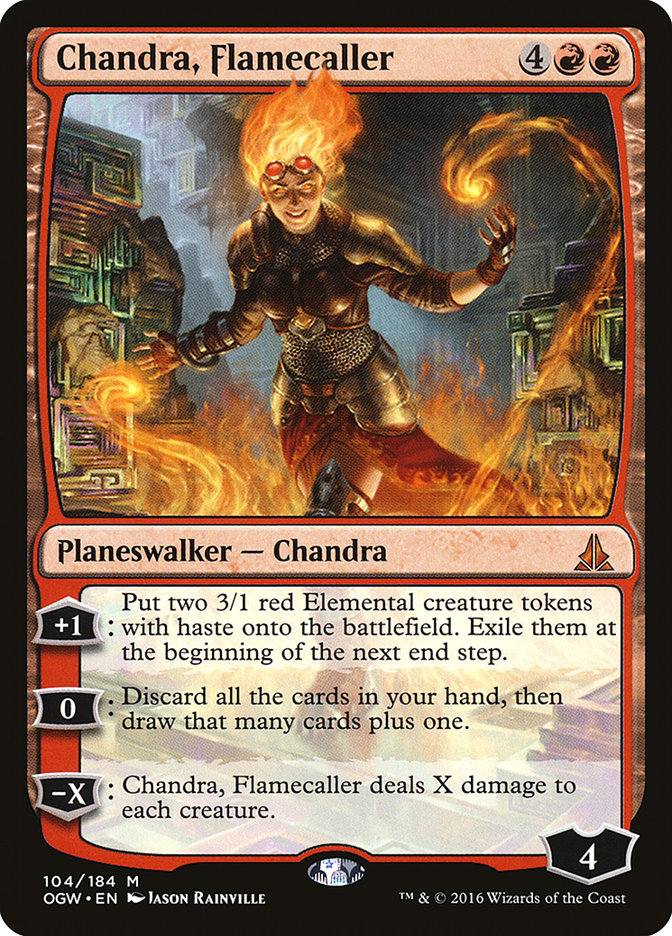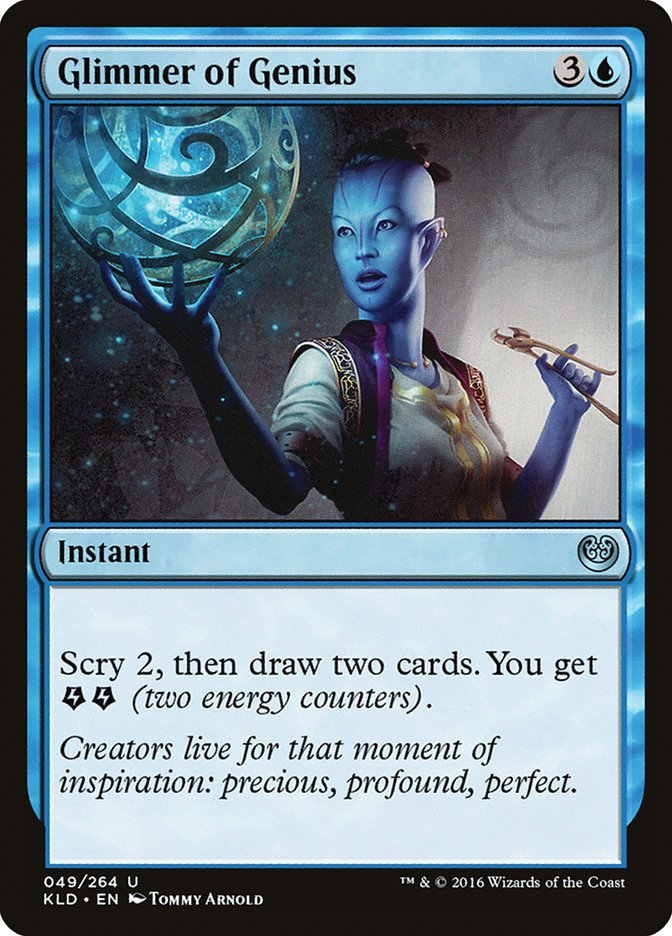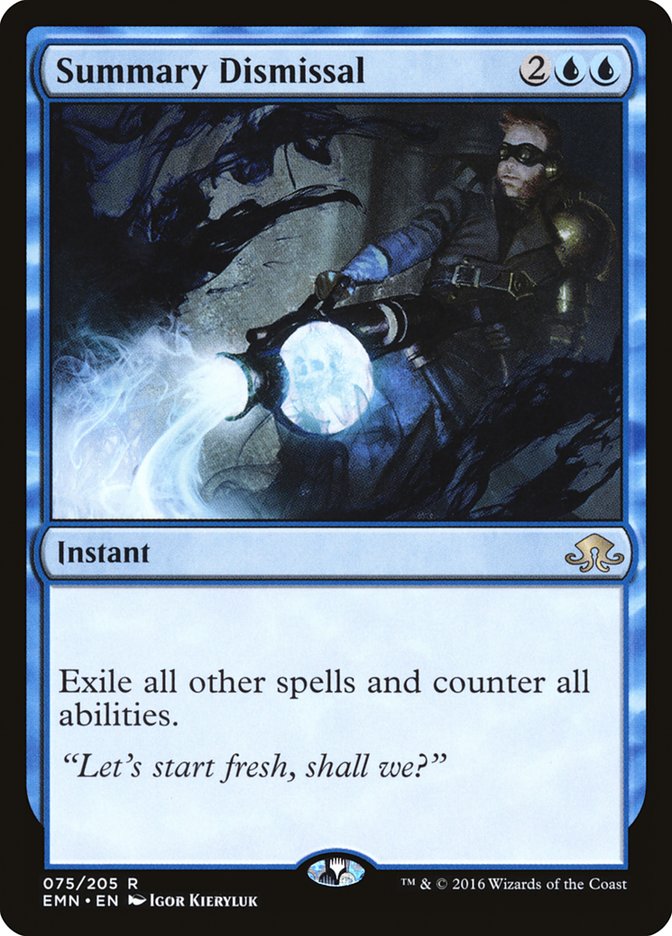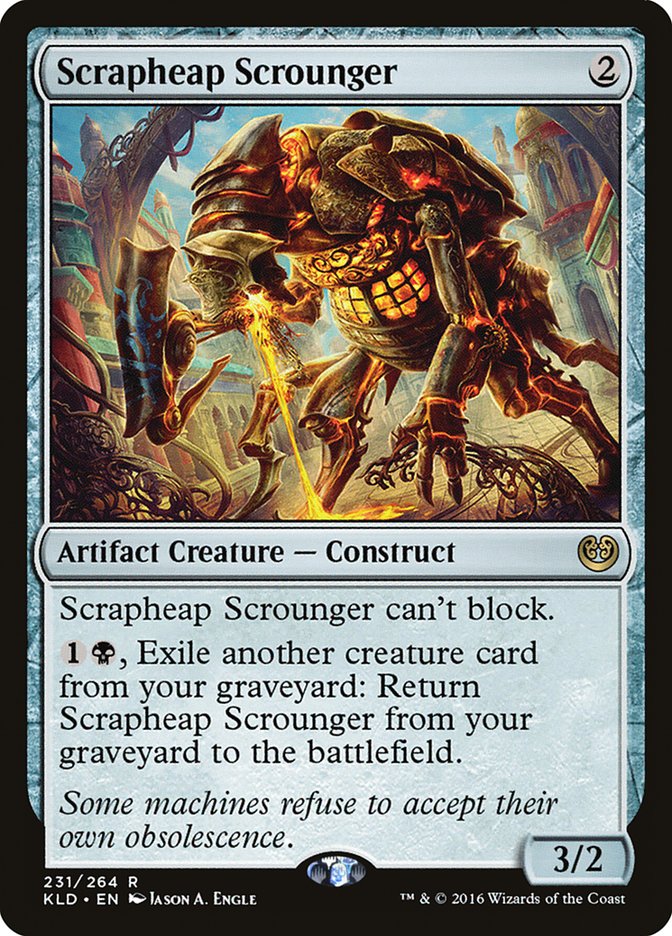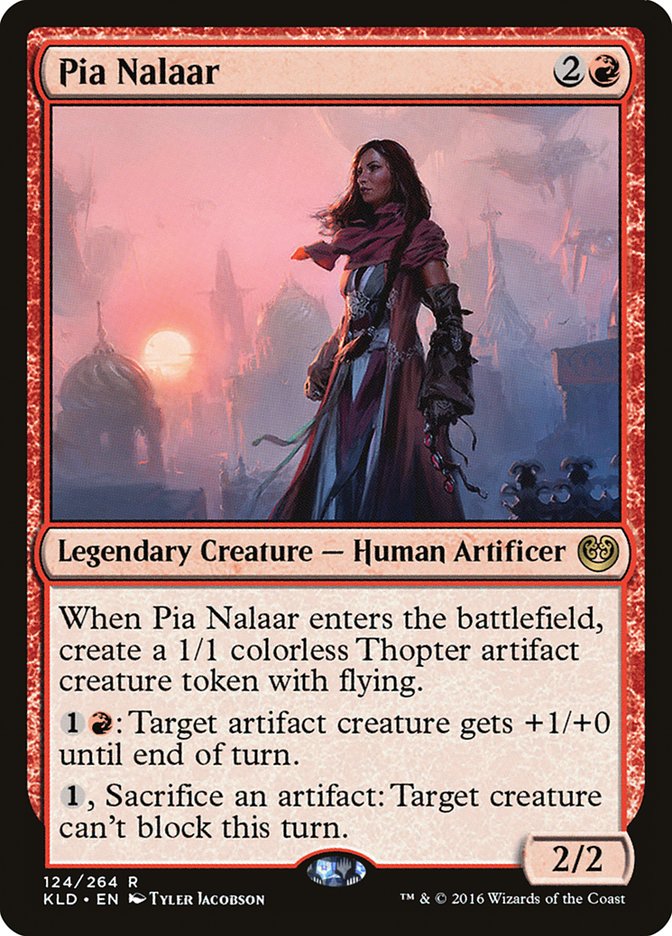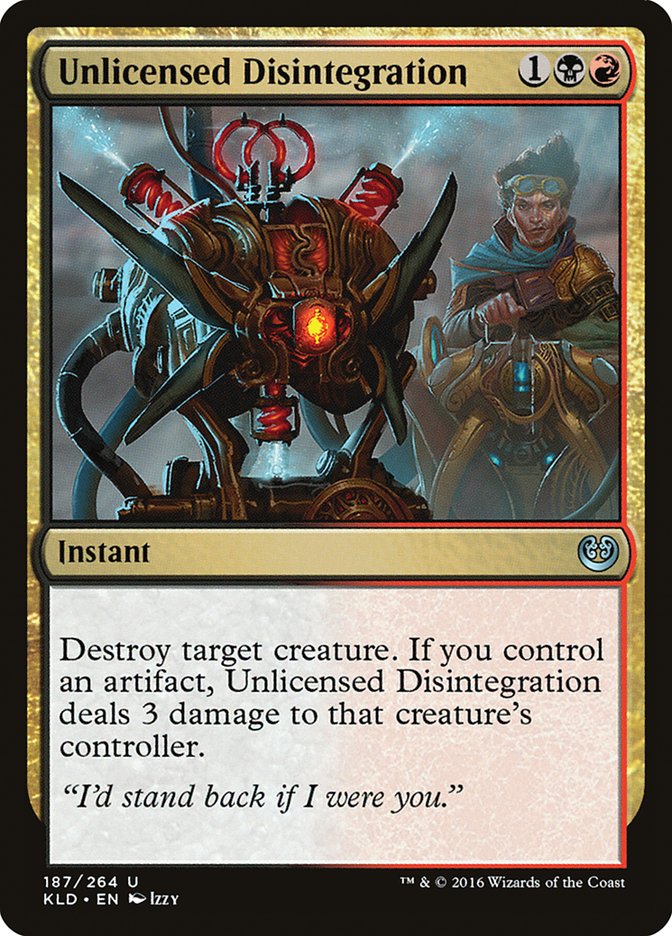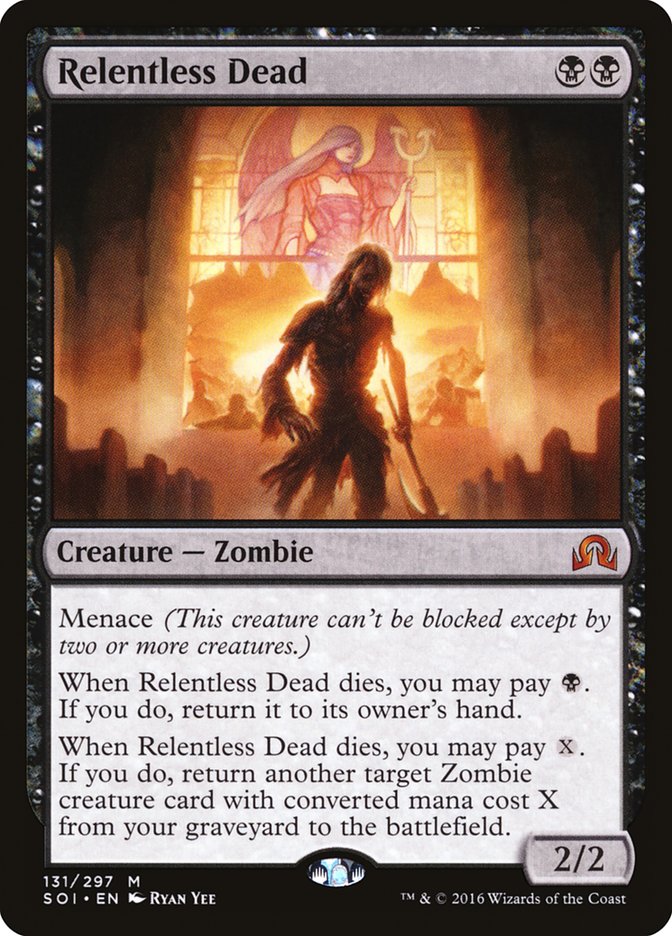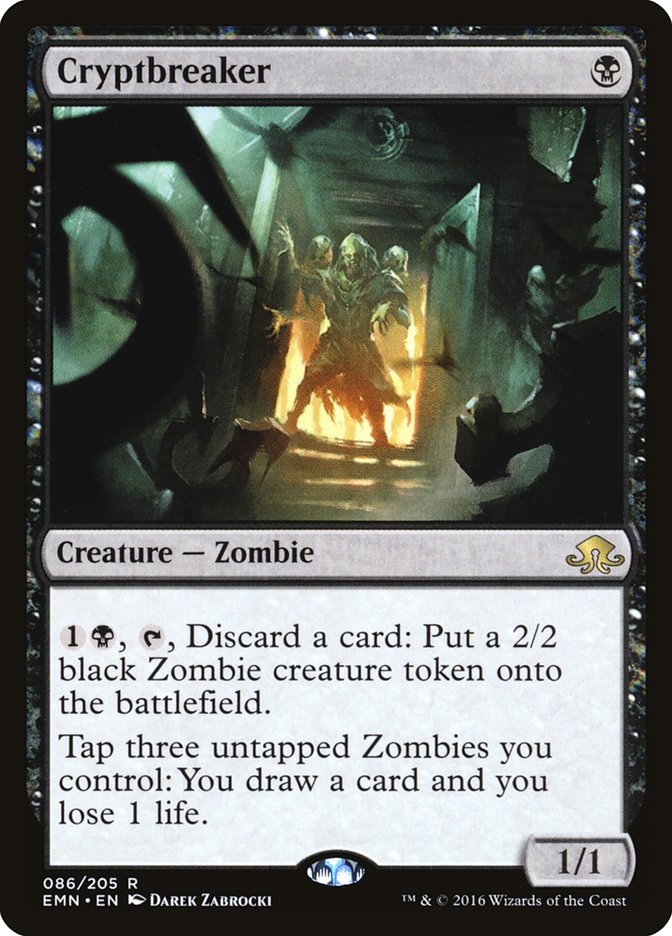I’m not going to sugarcoat it for you. This Standard format is bad. And honestly, I don’t know if there is one right answer on “what to ban,” or even “what to unban” in order to fix it. And with the late-to-the-party ban of Felidar Guardian, I don’t know if we’re going to see any more bans anytime soon. So settle in, suit up, and get ready to bow to the Aetherworks Marvel overlords for the next few months.
Or just play Modern!
For some, staying away from Standard in favor of another format is not an option. For others, it seems like the only right option. So today, in order to keep it real, I’m going to go over all the reasons why you should play Aetherworks Marvel instead of any other deck in Standard. I don’t like it any more than you do, but honesty is key for maintaining a healthy writer/reader relationship. So, even though it might be a boring subject, please let me try to entertain you while we go over what is essentially the Civil War in American History. Spoiler alert: The North wins, and so does Aetherworks Marvel.
The Daddy Goes to Montreal
I’ll start with the list.
Creatures (11)
Planeswalkers (2)
Lands (22)
Spells (25)

All right, so there it is. Mostly based on the Yuuya Watanabe list from #PTAKH, Kevin “The Daddy” Jones took down Grand Prix Montreal with a version of Aetherworks Marvel that seems to be favored in the mirror. While playing cards like Censor and Glimmer of Genius might lose you some win percentage points against some of the more aggressive decks in the field, it does give you some bite in the mirror. In particular, Torrential Gearhulk and the more controlling sideboard plan seem to be the right move for beating other Aetherworks Marvel decks.
Plus, Glimmer of Genius is bae.
The best thing going for Kevin Jones in this list is that he decided to play the Zombie hoser that is Chandra, Flamecaller. That card singlehandedly allowed Martin Mueller, and the other members of Team Genesis, to do so well at #PTAKH. They don’t really put up planeswalkers, so the minus ability on Chandra, Flamecaller usually wipes their entire battlefield. On more than one occasion, Michael Majors has admitted to choosing Chandra, Flamecaller over Ulamog, the Ceaseless Hunger when spinning Aetherworks Marvel. That alone should speak volumes as to what the powerful planeswalker can really do.
Maybe the sideboard isn’t perfect, and maybe Nissa’s Renewal just doesn’t have a place in the list anymore, but everything seemed to work out fine for The Daddy at the tournament, so here we are. Instead of analyzing every sideboard card, I’ll just go over some of the more important bullet points for each of the other major players in the format.
Don’t Play U/R Control!
I know, I know. I’m usually the guy who’s telling you to jam more counterspells and card draw spells, and that should give you just an idea of what I think about U/R Control at the moment. A lot of people are writing about how Aetherworks Marvel has a tough time against a slew of counterspells, but that’s just untrue. Sure, you can flood out, or even have draws that are lackluster against a Negate / Disallow / Glimmer / Gearhulk draw. That’s just a part of playing a deck that hinges on one particular card resolving.
But you can also do things, as an Aetherworks Marvel player, to help alleviate the pressure a deck like U/R Control can put on you. The most glaring problem, for me, is that U/R Control can’t close games quickly. That means you’re likely going to end up having to beat a hard-cast Ulamog, the Ceaseless Hunger. Obviously, you can still counter it and just lose two lands as a result. But what if you need to try to end the game before it gets to that point? What if they put enough blockers in front of the Torrential Gearhulk so killing them with it is just improbable?
What if they draw their own Gearhulk(s) and just kill yours with the Harnessed Lightnings rotting in their hand?
I don’t say all this to be overly negative about the U/R Control strategy, but it shouldn’t be a surprise that Ulamog, the Ceaseless Hunger is a stronger end-game than Torrential Gearhulk. If the games go long enough, Ulamog, the Ceaseless Hunger will always be the trump. In the past, the dagger came in the form of Emrakul, the Promised End. Both big Eldrazi can prove troublesome for control decks, and in the past I’ve even gone so far as to play multiple copies of Summary Dismissal in the maindeck. And that might not be such a bad idea moving forward.
But the trouble with cards like Summary Dismissal is that they cost a ton of mana and don’t always work out when your opponent is likely sideboarding in some number of cheap counterspells to help win fights. Plus, if you’re bottlenecked into countering Tireless Tracker, Aetherworks Marvel, Torrential Gearhulk, and a slew of other threats, the odds that you still have access to a Summary Dismissal at just the right time is low. So what’s a control mage to do?
The easy answer is to just give up and play Aetherworks Marvel. The longer, more difficult answer probably involves adding another color, largely changing how the deck functions, and I’m not in the right mental state to spend 30 or 40 hours trying to find the perfect build for control to beat the current iteration of Aetherworks Marvel. I’ll let Shaheen Soorani and/or Jim Davis take the reins on that one. For me, I’m choosing this particular version of Aetherworks Marvel over it, and here’s why:
1) As the Aetherworks player, you can actually out-card the opponent. Two-for-one spells like Rogue Refiner, Aetherworks Marvel, and even Whirler Virtuoso can give them fits. While they aren’t fast clocks, they force the control player’s hand to react, which usually gives you a window to cast something game-breaking. Plus, you have access to your own copies of Glimmer of Genius and even Censor.
2) As the control player, I don’t feel comfortable playing against this deck. Too much can go wrong for me to want to be the one sitting on my hands, hoping that they miss their land drop to cast Ulamog, the Ceaseless Hunger or whiff on their Aetherworks Marvel spin that slipped through the cracks. The problem is that they’re playing a lot of the same control elements as you but can actually take a more aggressive stance and put pressure on you. In traditional control mirrors, the game-breaking effects usually didn’t come alive until the sixth turn or later. Now we have to be deathly afraid of a four-drop spell on top of everything else.
3) You just can’t win the game fast enough to beat Ulamog, the Ceaseless Hunger. Even after sideboard, cards like Thing in the Ice or Dragonmaster Outcast are fine, but they aren’t tipping the scales all that much in your favor. And to be frank, the sideboard plan of Aetherworks Marvel is just better than any sideboard plan you have access to.
The sound of a dream dying.
So there it is. I officially give up as the U/R Control player in this format.
More Like Mar-Don’t, Amirite?
I’m having a tough time wrapping my head around this one, because I’ve had it beat into my head for the last four months or so that Mardu Vehicles is/was one of the best decks in the format. While it certainly has game against Aetherworks Marvel, their big transformational sideboard plan is not really an option here. So, as an Aetherworks Marvel player, you know what they’re going to be throwing at you: sheer aggression. If you can beat their best aggressive draws, you’re going to do just fine.
As a Mardu Vehicles player, my heart says that the deck is still fine. You still have Gideon, Ally of Zendikar, after all. And as far as sheer power level goes on a standalone card, it doesn’t get much better in the current Standard format. Many of your threats are cheap while also having a “second life” (think Scrapheap Scrounger, Pia Nalaar, and even Thraben Inspector). Alongside Gideon, Ally of Zendikar, these threats give you a lot of insulation against opposing spot removal and sweepers.
I don’t know why Mardu Vehicles performed poorly at #PTAKH, but it certainly put up some solid numbers at both Grand Prix this past weekend. Two copies in the Top 8 of each tournament is nothing to sneeze at. It just makes it all the more awkward that the finals of both tournaments featured an Aetherworks Marvel mirror. So when deciding between Aetherworks Marvel or Mardu Vehicles, we have to consider the following:
1) Is Unlicensed Disintegration good enough? For me, this is the biggest draw for Mardu Vehicles. And right now, basically every deck in the format plays some creature that desperately wants to die and deal its owner three damage. As far as aggressive decks are concerned, Unlicensed Disintegration is one of the most powerful removal options ever printed. And the fact that manabases are so good right now means you can easily splash for it, even if your core color isn’t black or red.
2) Fatal Push isn’t all that great at the moment, and I don’t know if Magma Spray (or Shock, for that matter) is a better option. The creatures in Temur Aetherworks cost three or more, which means you’ll have to jump through some hoops in order to get it online. But unfortunately, Fatal Push is also a key card in the mirror for keeping an opposing Heart of Kiran in check, as well as helping prevent the scenario where B/G Constrictor just runs all over you. This is a tough line to walk.
3) You are a fairly consistent aggressive strategy that has more than proven your worth in the last few months. Whether or not you switch to Aetherworks Marvel is almost a moot point. Both decks are powerful, but both also require some intense sequencing decisions. I think the smart bet is on Aetherworks Marvel at the moment, but I certainly wouldn’t fault you for coming to the conclusion that you could pilot Mardu Vehicles more efficiently. While there are some “no serious thought required” draws from Temur Aetherworks that spin into Ulamog, the Ceaseless Hunger on the fourth turn, Mardu Vehicles has just as many of those draws that feature Gideon, Ally of Zendikar on a perfect curve.
4) The matchup between the two will almost certainly come down to whether or not the Aetherworks Marvel player hits one of their big cards from the first spin or two. While they aren’t exactly favored to hit an Ulamog, the Ceaseless Hunger on the first spin, the fact that you’re leaving fate in your opponent’s hands can be terrifying. And at its core, that is one of the things that makes people hate Aetherworks Marvel so much. No one likes losing the game on the fourth turn, but at least Saheeli Rai could be broken up for a turn or two by a removal spell.
Brains!!!
Zombies, in the hands of this fine website’s own Gerry Thompson, took down the Pro Tour while wading through a field of Aetherworks Marvel. My gut tells me that was mostly due to the fact that Zombies is more consistent than anything else in the format. Sure, it has some powerful cards and solid synergy, but it rarely has trouble casting any of its spells, and that can be a valuable trait in the world of three-plus-color decks we live in.
Creatures (24)
- 4 Relentless Dead
- 4 Diregraf Colossus
- 4 Cryptbreaker
- 4 Metallic Mimic
- 4 Lord of the Accursed
- 4 Dread Wanderer
Lands (24)
- 22 Swamp
- 2 Westvale Abbey
Spells (12)

And aside from Relentless Dead and Grasp of Darkness having some awkward tension with the two copies of Westvale Abbey, you will never have issues with casting your spells.
So let’s break it down:
1) Curving out is pretty easy, as none of your lands enter the battlefield tapped or produce the wrong color(s) of mana. Your deck has a solid curve that can occasionally overwhelm an unsuspecting opponent without a lot tough decisions. All in all, Zombies is a “good” deck in a world full of ridiculous things going on. Your biggest incentive to play Zombies is because it is the most consistent deck by a wide margin.
2) The creatures are “sticky,” which means killing them doesn’t always solve the problem, and they can get out of control if you don’t kill the right ones at the right time. Even a first-turn Cryptbreaker can lead to some overwhelming card advantage if you don’t deal with it immediately.
3) Your sideboard can provide some cheap ways to interact with Aetherworks Marvel, though nothing will outright “kill” it. Drawing some combination of disruption alongside a good curve is the best recipe for beating Temur Aetherworks. The awkward part comes when you draw no disruption or too much of it. Their deck has a weird way of finding wins without their marquee card.
But while Zombies is a solid deck, I think the real test will come when people figure out exactly why Chandra, Flamecaller was in the Temur Aetherworks decks in the first place. Again, I have Michael Majors (and Brad Nelson) to thank when it comes to Chandra, Flamecaller making a comeback in the format. Both of them were pretty high on the card during Team Genesis testing, and I don’t think it was surprising for either of them that a member of their team made it into the Top 4 of #PTAKH with four copies in their Temur Aetherworks deck. While Kevin Jones didn’t play the full four copies, he instead chose to hybridize the two versions of Temur Aetherworks into something entirely new.
No, Kevin wasn’t the first person to play Glimmer of Genius or Chandra, Flamecaller in Temur Aetherworks, but it seems he was the first person to play both. And while playing good cards in a busted deck isn’t necessarily groundbreaking stuff, I think it is safe to assume it is part of the reason he was able to take down the Grand Prix.
I have only played five games against the Daddy’s version, but I feel like I’m already hooked. I got the absolute crap kicked out of me, and it’s all I’ve been able to think about since. And while I do think Zombies is a fine deck, I don’t know if it will be able to win games before a Chandra, Flamecaller threatens to seal the deal.
But again, the major downside to playing a deck like Temur Aetherworks is that it has a fail rate, and that is something Zombies (like any other mono-colored aggressive deck throughout Magic’s history) will never suffer from. All of your cards do mostly the same thing, and you will rarely have trouble casting your spells. And while Aetherworks Marvel does a fine job at mitigating the “color screw” factor, you will never be able to get rid of the gut-wrenching feeling of missing on an Aetherworks Marvel when it matters most. But with that said, there are few other cards in Standard that can get you out of a pickle like an Ulamog, the Ceaseless Hunger or Chandra, Flamecaller.
So we’ll call it a draw for now, but only because GerryT won the Pro Tour. I don’t want to say his deck is unplayable, but I also couldn’t in good conscience suggest playing it over Aetherworks Marvel.
In the Immortal Words of The Postal Service…
It’s a Marvelous world, and we’re just along for the ride. This deck is Caw-Blade with Jace, the Mind Sculptor. This deck is U/W Delver in its prime. This deck is…well maybe I’m going a little overboard, but it is certainly very good, and I’d even go so far as format-warping. Will it get banned? My guess is that they’re done banning things for the foreseeable future, but who knows? It could get banned tomorrow, for all I know.
So live it up! Spin the wheel and have fun doing it. I know I will (spin, that is; having fun I will not). So yeah, listen to The Daddy, and just play Aetherworks Marvel. If you don’t, you’re going to regret it. And if you do…well, you’re still going to regret it, but there aren’t a whole lot of other options at this point.
Good night, and good luck.


